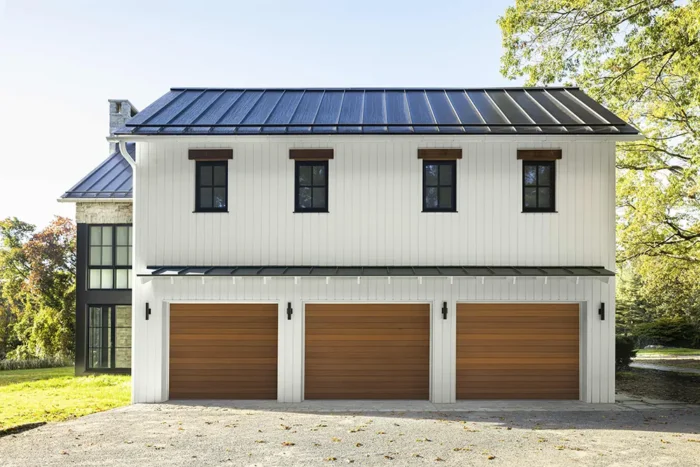onnecting a Garage Door Repair Lake Forest CA system involves several steps to ensure a secure and functional setup.

Below, I’ll guide you through the process in detail, using approximately. Please follow these steps carefully:
: Gather Your Tools and Materials
Before you begin, make sure you have the necessary tools and materials at hand:
- Garage door opener unit
- LiftMaster remote control (compatible with your opener)
- Ladder
- Screwdriver
- Electrical tape
- Safety goggles
: Prepare the Garage Door Opener
- Locate the Power Source: Most garage door openers require electricity. Locate the nearest electrical outlet and ensure it’s working correctly.
- Unplug or Disconnect: If there’s an existing garage door opener, unplug it or disconnect it from the power source. This is essential for safety.
- Clear the Area: Make sure there are no obstructions around the garage door opener. This includes removing any items that might be in the way.
: Install the Garage Door Opener
- Position the Opener: Place the garage door opener on a secure surface or mount it to the ceiling using the provided brackets and screws. Follow the manufacturer’s instructions for the specific model you have. Use a ladder to reach the ceiling if needed.
- Attach the Rail: Connect the rail assembly to the motor unit. This rail guides the garage door as it opens and closes. Secure it according to the manufacturer’s instructions.
- Install the Trolley: Slide the trolley onto the rail and secure it in place. This component connects the opener to the garage door.
- Attach the Door Arm: Connect the door arm to the trolley and the top section of the garage door. Ensure it’s properly aligned and securely attached.
- Attach Safety Sensors: Install safety sensors near the bottom of the garage door track. These sensors prevent the door from closing if an object or person is in the way. Follow the manufacturer’s guidelines for sensor placement.
: Wiring the Opener
- Connect the Power: Plug in the garage door opener to the electrical outlet or wire it to a dedicated circuit following the manufacturer’s instructions. Make sure the power is off while connecting the wires to avoid electric shock.
- Connect the Control Wires: Attach the control wires provided with your opener to the appropriate terminals on the back of the motor unit. Typically, there will be terminals for power, ground, and control wires. Securely tighten these connections.
- Install the Wall Control Panel: Mount the wall control panel inside your garage near the door. Connect the control panel wires to the motor unit following the manufacturer’s instructions.
- Connect the Safety Sensor Wires: Connect the wires from the safety sensors to the corresponding terminals on the opener unit. These wires are typically color-coded, and the connections should be clearly labeled.
- Install a Surge Protector: For added protection, consider installing a surge protector on the opener’s power supply to safeguard against electrical surges.
: Program the LiftMaster Remote Control
- Locate the “Learn” Button: On your LiftMaster garage door opener, there will be a “Learn” button, typically located on the motor unit or the wall control panel.
- Press the “Learn” Button: Press and release the “Learn” button. The indicator light on the opener should start blinking.
- Press a Button on the Remote: Within 30 seconds of pressing the “Learn” button, press and hold the button on your LiftMaster remote control that you want to use to operate the garage door. Hold the button until the opener’s light stops blinking.
- Test the Remote: Test the remote by pressing the button you programmed. The garage door should open or close. If it doesn’t, repeat the programming steps.
: Adjust Opener Settings
- Travel Limits: Adjust the open and close travel limits on the opener to ensure that the garage door fully opens and closes without any obstructions. Refer to the manufacturer’s instructions for details on how to adjust these settings.
- Force Settings: Set the force settings to ensure that the garage door stops and reverses if it encounters an obstruction during closing. Refer to the manufacturer’s instructions for guidance on adjusting the force settings.
: Secure the Opener
- Secure the Rail: Make sure the rail is securely fastened to the ceiling or wall. This is essential for the safe operation of the garage door opener.
- Safety Reversal Test: Perform a safety reversal test by placing an object, such as a block of wood, in the path of the closing garage door. The door should automatically reverse when it contacts the object. If it doesn’t, troubleshoot and adjust the settings accordingly.
- Final Checks: Inspect all the connections, wires, and fasteners to ensure they are secure and free from any hazards.
: Additional Accessories (Optional)
If you have additional LiftMaster accessories, such as a wireless keypad or smartphone control, follow the manufacturer’s instructions to install and program them.
: Maintenance and Safety
To ensure the long-term functionality and safety of your garage door opener, perform regular maintenance, such as lubricating moving parts and cleaning the safety sensors. Additionally, periodically test the safety features to ensure they are working correctly.
In conclusion, connecting a Garage Door Repair Lake Forest CA system involves several steps, including preparing the opener, wiring it correctly, programming the remote control, adjusting settings, and ensuring safety. Always follow the manufacturer’s instructions specific to your garage door opener model, and prioritize safety throughout the installation process. If you encounter any issues or are unsure about any step, consult a professional technician for assistance.
Lake Forest Overhead & Garage Doors
22762 Aspan St 202 143, Lake Forest, CA 92630, United States
1-949-776-4731
